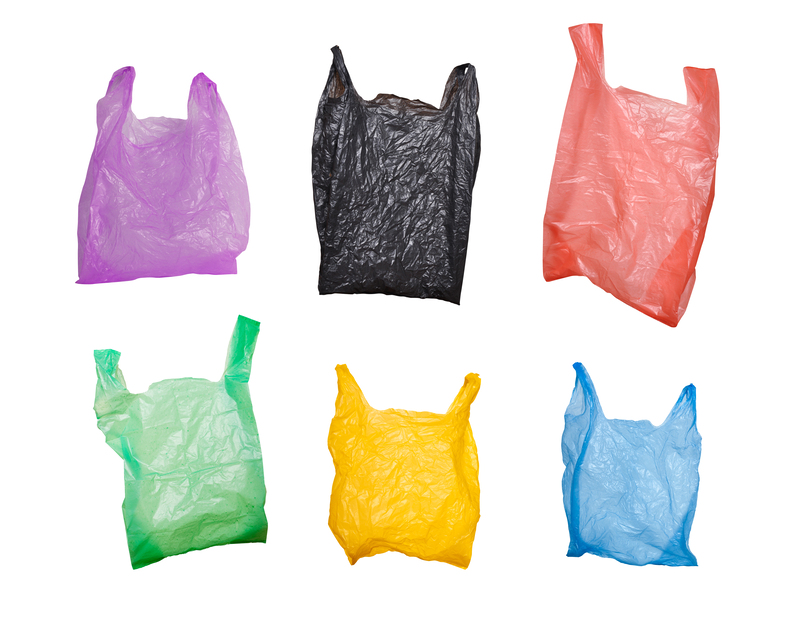Tips for Keeping PPE Waste Out of Landfills: A Sustainable Guide
The COVID-19 pandemic saw an exponential increase in the use of personal protective equipment (PPE), such as masks, gloves, and face shields. While these items have been vital for safety, they have also contributed to a global surge in plastic waste. Discarded PPE clogs our landfills, pollutes the environment, and poses health risks to communities and wildlife alike. But it doesn't have to be this way.
By embracing sustainable strategies and informed disposal methods, we can reduce PPE waste and keep it out of landfills for a cleaner, greener future.
Why PPE Waste Is a Growing Environmental Concern
PPE primarily comprises single-use plastics--materials that can take hundreds of years to decompose. As PPE litter accumulates, landfills are being pushed to their limits. The environmental fallout doesn't stop there:
- Wildlife Ingestion and Entanglement: Animals mistake PPE for food or become tangled, leading to injury and death.
- Microplastics: Over time, PPE items break down into smaller particles, contaminating soil and water, and entering the food chain.
- Resource Depletion: The production and disposal of single-use PPE involves significant energy, water, and material resources.
So, how can individuals, communities, and organizations act responsibly and keep PPE waste out of landfills?

Top Tips for Reducing PPE Waste in Landfills
1. Choose Reusable PPE Where Safe and Practical
One of the most effective ways to cut down on waste is by opting for reusable PPE whenever possible. While some situations (like in hospitals or clinics) require strict single-use policies, many people can safely use reusable masks, face shields, and even certain types of gloves.
- Reusable Cloth Masks: High-quality, washable masks can be used repeatedly, drastically minimizing single-use waste.
- Face Shields: Durable shields can be disinfected and reused, unlike disposable one-time-use varieties.
- Care and Maintenance: Ensure thorough cleaning according to manufacturer guidelines to maintain effectiveness.
*Tip: Carry spare reusable masks and a sealable bag for storing used ones safely until you can wash them.*
2. Seek Out Proper PPE Recycling Programs
Not all PPE is recyclable via standard curbside programs, but specialized recycling schemes are emerging to address this gap:
- TerraCycle's Zero Waste Boxes: Collect masks, gloves, and other disposables for mail-in recycling (available in many countries).
- Hospital-Based Initiatives: Some healthcare providers partner with recycling firms to recover suitable PPE waste.
- Local Waste Authorities: Check with city or municipal waste programs for drop-off locations or audits on PPE recycling options.
Ensure that your discarded PPE items are not contaminated, as soiled or unsanitized materials may not be accepted for recycling.
3. Educate and Encourage Responsible PPE Disposal
Awareness plays a crucial role in diverting PPE waste from landfill. Large segments of the population are still unsure about the appropriate way to dispose of PPE. Here's how you can help:
- Clear Instructions: Post signage on how and where to dispose of PPE safely at workplaces, events, and public venues.
- Community Programs: Launch education campaigns on the environmental impacts of PPE pollution.
- FAQs and Tutorials: Share online resources about proper mask removal, bagging procedures, and waste sorting.
4. Support the Adoption of Biodegradable PPE
Innovative companies have begun developing biodegradable PPE--masks, gloves, and gowns made from materials that break down naturally in the environment. These options, when disposed of correctly, alleviate the burden on landfill sites.
- Cornstarch-Based Masks: Made from renewables and completely compostable.
- Plant Fiber Gloves: Provide the necessary barrier without long-term pollution.
- Adopt and Advocate: Whenever possible, purchase and advocate for eco-friendly PPE in workplaces and schools.
*Reminder: Double-check whether "biodegradable" products need specific composting conditions, such as industrial facilities, to degrade efficiently.*
5. Establish PPE Collection Points
Instituting dedicated bins for PPE waste mitigates littering and prevents contamination of general recycling streams. Best practices for collection points include:
- Clearly Labeled Bins: Use bold signage to differentiate PPE bins from other waste receptacles.
- Strategic Placement: Place bins in high-traffic areas such as entrances/exits, public transit stations, and building lobbies.
- Staff Training: Educate custodial and support staff about safe and hygienic collection methods.
- Safe Storage: Secure containers with lids to prevent waste spillage and unauthorized access.
Centralized collection also enables easier partnering with recycling companies and more efficient sorting of non-contaminated PPE waste.
6. Partner with Environmental Organizations
Many nonprofit and advocacy groups focus on waste minimization and recycling, offering valuable guidance on how to handle PPE waste. Collaborate to:
- Host PPE Waste Drives: Mobilize community collections or volunteer sorting days.
- Source Funding: Secure grants for bins, signage, and educational material.
- Find Solutions: Work together to innovate new PPE management strategies or policy recommendations.
Collective action magnifies impact, reducing the load on municipal landfill systems and protecting local habitats.
7. Advocate for Legislation on PPE Waste Management
Effective policy is key to large-scale change. Encourage your local and national governments to:
- Ban Hazardous PPE Materials: Restrict the sale of non-recyclable or slow-to-degrade PPE products.
- Set Recycling Targets: Mandate that manufacturers and users recover a certain percentage of used PPE for recycling.
- Fund Research: Invest in alternatives and support startups making compostable or reusable PPE.
- Enforce Proper Disposal: Introduce fines or penalties for improper PPE litter, supporting compliance through clear guidelines.
Policy implementation ensures that efforts to keep PPE waste out of landfills are consistent, effective, and long-lasting.
Frequently Asked Questions: PPE Waste and Landfill Reduction
Can PPE like masks and gloves be recycled at home?
Typically, household recycling bins are not equipped to handle PPE waste, as these items may contain hazardous biological material. Always check local guidelines--if in doubt, search for a dedicated PPE recycling program or contact your waste authority.
Is burning PPE waste better than sending it to landfill?
Incineration reduces waste volume but can release harmful pollutants if not carried out in specialized facilities. Whenever possible, prioritize reduction, reusability, or dedicated recycling over incineration or landfilling.
Are reusable face masks as effective as disposable ones?
When made of multiple layers of tightly woven fabric, reusable masks offer significant protection for everyday use. However, medical staff in high-risk environments should adhere to official guidelines for surgical masks or respirators.
How can businesses reduce their PPE landfill footprint?
- Switch to reusable or biodegradable PPE where appropriate.
- Set up internal collection and recycling streams.
- Educate staff on proper disposal protocols.
- Work with vendors who offer sustainable PPE options.
The Future: Innovations and Trends in PPE Waste Management
New technologies and policies are paving the way for more sustainable PPE use:
- Smart Bins: Equipped with sensors, these bins alert custodians when full, improving PPE waste logistics.
- Advanced Material Science: Research into biodegradable polymers and plant-based alternatives is accelerating.
- Producer Responsibility: Some governments now require PPE manufacturers to take back and safely manage post-consumer waste.
- Upcycling Projects: Artists and innovators are transforming clean, used PPE into building materials, art installations, and more.
Stay informed--these advancements could soon make a substantial dent in our reliance on single-use, landfill-bound PPE waste.
The Role of Personal Responsibility in PPE Waste Reduction
While large-scale systems are essential, the daily choices each person makes add up quickly. Take individual action by:
- Refusing single-use PPE unless absolutely necessary.
- Researching disposal and recycling options before discarding PPE.
- Caring properly for your reusable equipment to prolong its life.
- Spreading awareness in your network, workplace, and on social media.
Every mask, glove, or gown kept out of a landfill matters--be a part of the solution.

Conclusion: Turning the Tide on PPE Landfill Waste
PPE waste presents one of the most pressing environmental challenges of the post-pandemic age. However, by making informed choices--whether through opting for reusable options, supporting innovative recycling schemes, advocating policy change, or simply disposing of PPE correctly--we can all contribute to a healthier planet.
Let's work together to keep PPE waste out of landfills, protecting our environment and future generations.
Action Checklist: Start Today
- Switch to reusable PPE where possible.
- Set up or find local PPE recycling programs.
- Promote responsible disposal through education and clear signage.
- Support businesses and policies that prioritize sustainable PPE solutions.
Each step you take brings us closer to a landfill-free future for PPE waste. Make a difference--begin your sustainability journey today!